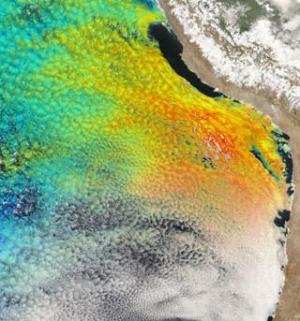Also discussed here: Researchers Develop Technique to Help Pollution Forecasters See Past Clouds (ScienceDaily, Jul. 10, 2012)
Today we review research aimed at deducing how much particulate pollution exists below clouds, as observed by satellites which normally have their air quality sensors blocked by the opaqueness of the clouds. The technique is based on comparing the number of droplets observed in a region which does not have particulates with one that does and then accounting for the difference. If applied and found successful, this would overcome one of the main difficulties in monitoring particulates near the ground from space.

Key Quotes:
“University of Iowa scientists have created a technique to help satellites "see" through the clouds and better estimate the concentration of pollutants, such as soot”
"Particles in the atmosphere (aerosols) interact with clouds changing their properties. With this technique, we can use remote sensing observations from satellites to estimate these cloud properties in order to correct predictions of particle concentrations. This is possible due to a numerical model that describes these aerosol-clouds interactions,"
"Unlike previous methods, this technique can directly improve predictions of near-surface, fine-mode aerosols -- such as coal-fired electric generating plants and wood-fueled cooking fires -- responsible for human health impacts and low-cloud radiative forcing (solar heating),"
"This technique is also complementary to previous methods used, allowing the observing system to 'see aerosols' even under cloudy conditions."









No comments:
Post a Comment